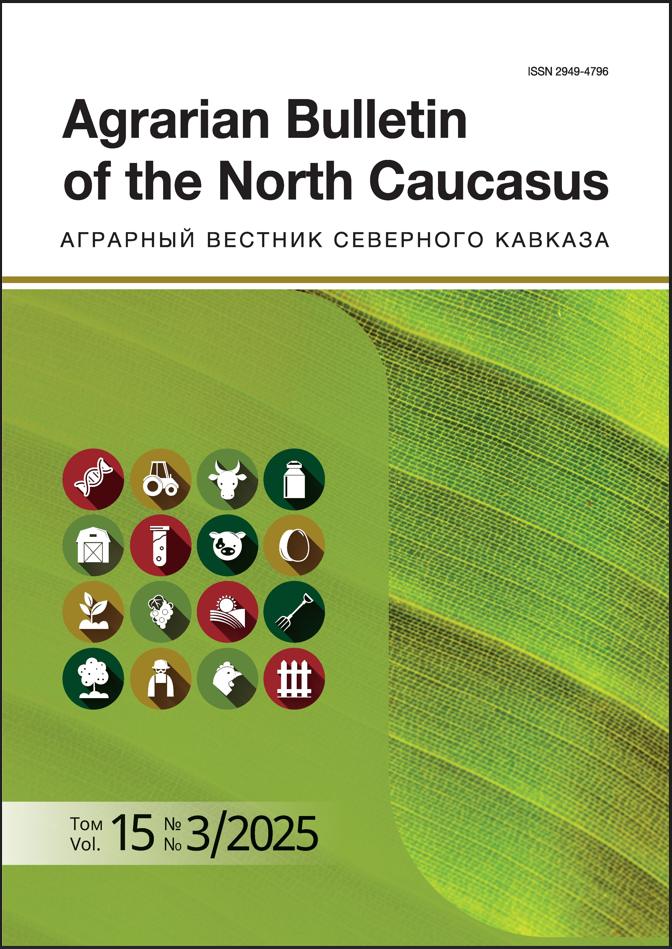Analysis of the Microbial Community in Forage from Wilted Grass-Legume Mixture Silage Treated with Biological and Chemical Preservatives
DOI:
https://doi.org/10.31279/2949-4796-2025-15-3-51-65Keywords:
cereal-legume grass mixture, silage, biological and chemical preservatives, aerobic stabilityAbstract
Introduction. The production of preserved feeds (silage, haylage) represents the primary method for conserving high-moisture forage crops, based on natural microbial fermentation processes under anaerobic conditions. The use of specialized additives capable of optimizing fermentation processes and regulating the microbial community composition in preserved plant material is essential for obtaining high-quality feed with optimal nutritional value and absence of undesirable microorganisms that cause spoilage and may serve as sources of infection for both animals and humans.
Aim. To study the effect of biological and chemical preservatives on silage microbiota from wilted cereal-legume grass mixture during fermentation and aerobic storage.
Materials and methods. The study utilized silage samples prepared from grass-legume mixtures wilted to 73.4% moisture content. A biological preservative Biotrof AC and a novel chemical preservative VIK 3C were employed. Experimental variants of the grass mixture were preserved in pure form and with the addition of soil to create a model of "field" contamination conditions during forage preparation. Biochemical nutritional parameters, the number of bacteria and yeast were determined in the silage after 30 days of fermentation, as well as after 7 days of forage aeration.
Results. A positive effect of the use of preservatives on the silage microbiota was established, including against the background of contamination and during long-term aeration. The main effect of the chemical preparation VIK 3С was associated with the suppression of the number of almost all microorganisms in silage. The biological preparation Biotrof AS was associated with the stimulation of Lactobacillus sp., which improve the silageability of plant and inhibit the growth of spoilage microbiota. Both preparations were contributed of lactic acid accumulation and the level of acidification in the feed. This led to a decrease in nutrient losses during the fermentation period and long-term storage with oxygen access.
Conclusions. The results of the study were shown positive effects of biological and chemical preservatives to improve fermentation, preservation of nutrients and aerobic stability feed.
To cite: Ilina L.A., Klimenko V.P., Abramyan A.S., Malyarenko S.A., Miyuts Z.K. Analysis of the Microbial Community of Feed From Dried Mass of Cereal-Legume Grass Mixture Using Biological and Chemical Preservatives. Agrarian Bulletin of the North Caucasus. 2025;15(3):51-65. https://doi.org/10.31279/2949-4796-2025-15-3-51-65
Downloads
Published
Issue
Section
License
Copyright (c) 2025 Larisa A. Ilina

This work is licensed under a Creative Commons Attribution 4.0 International License.



